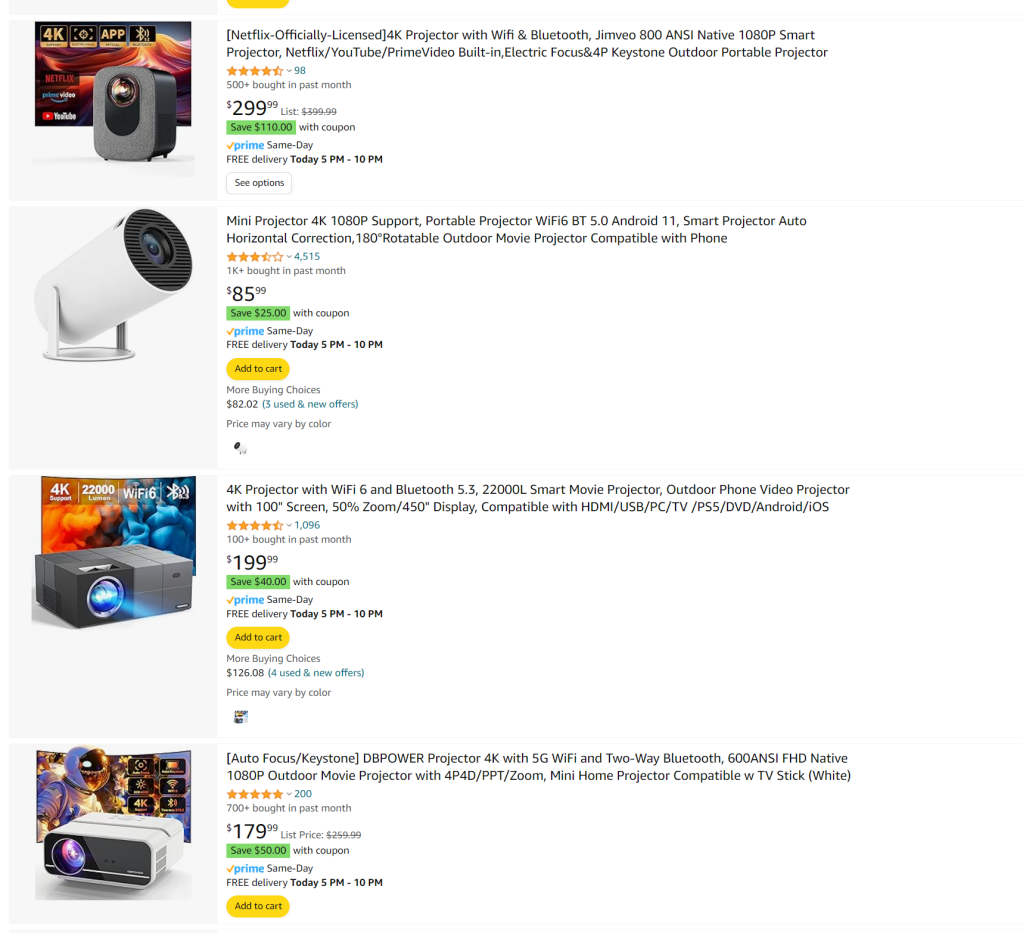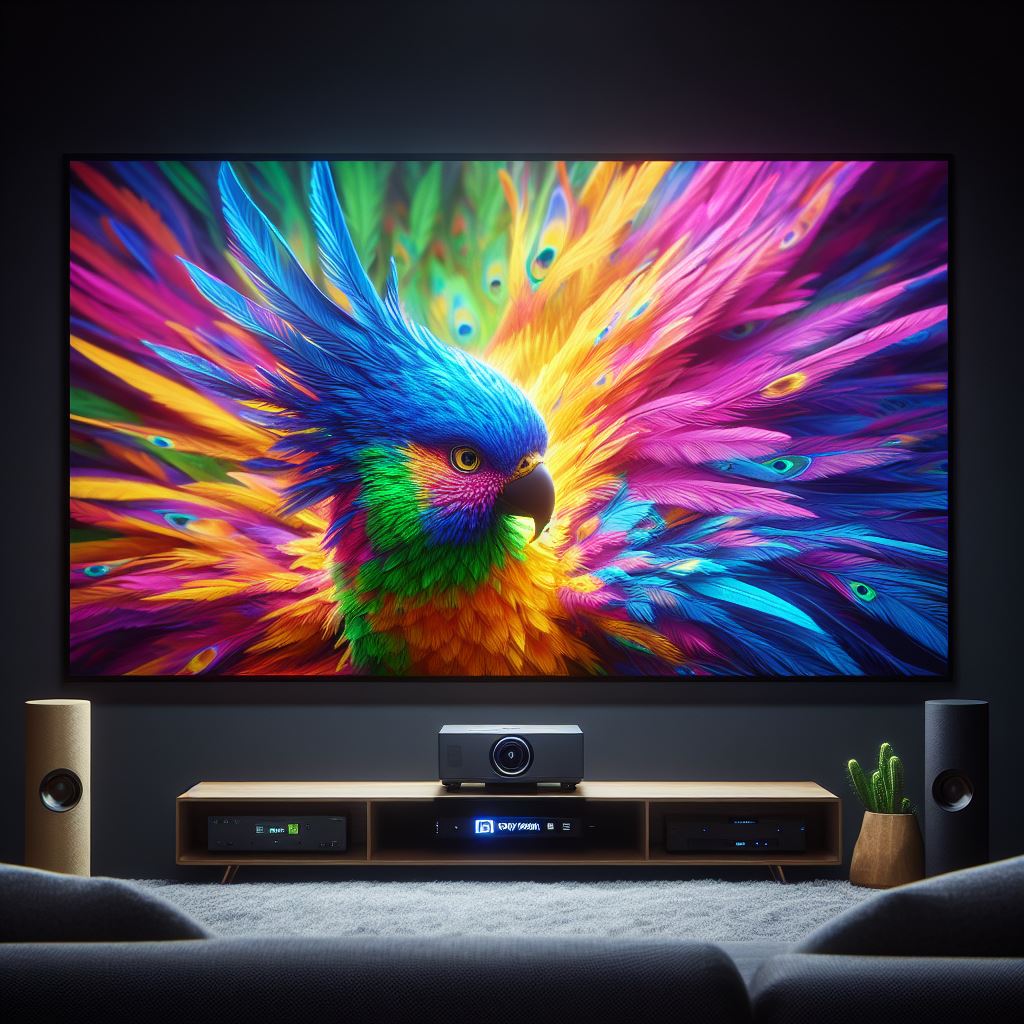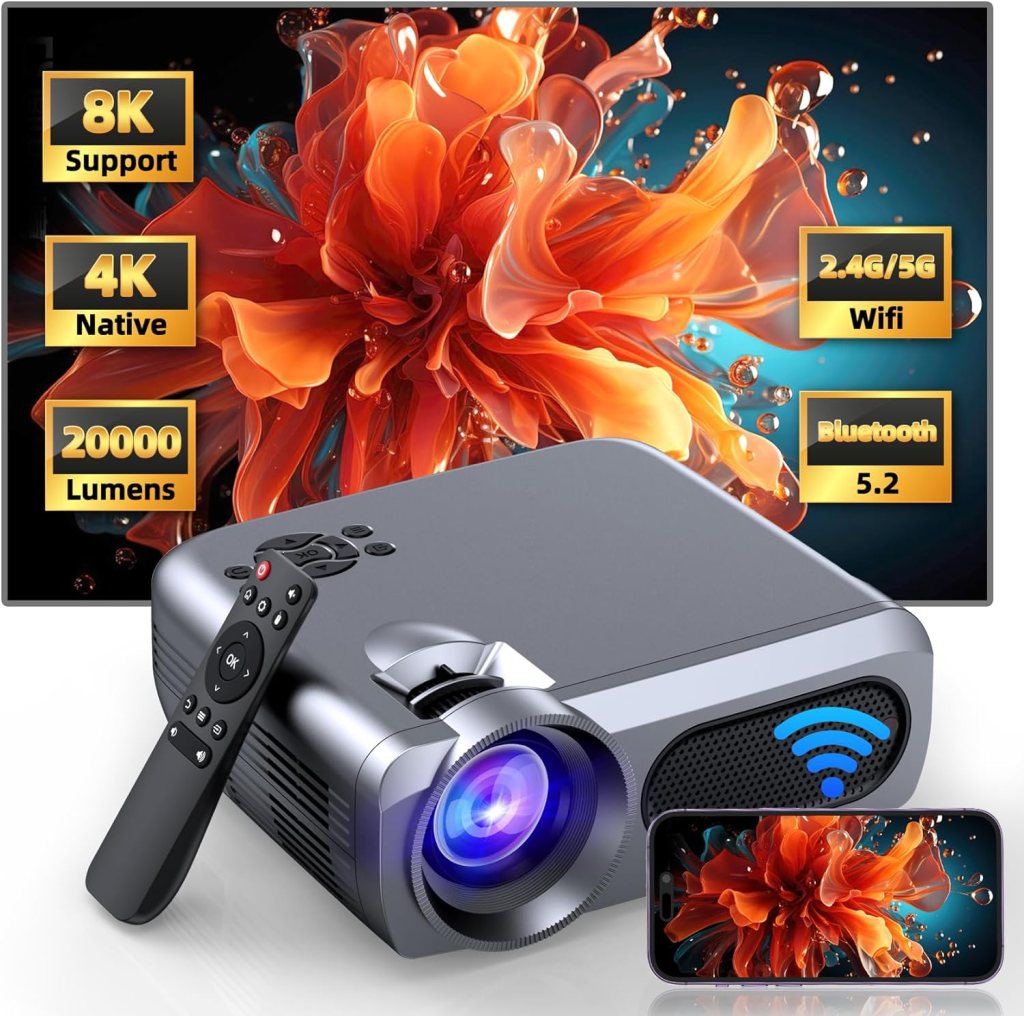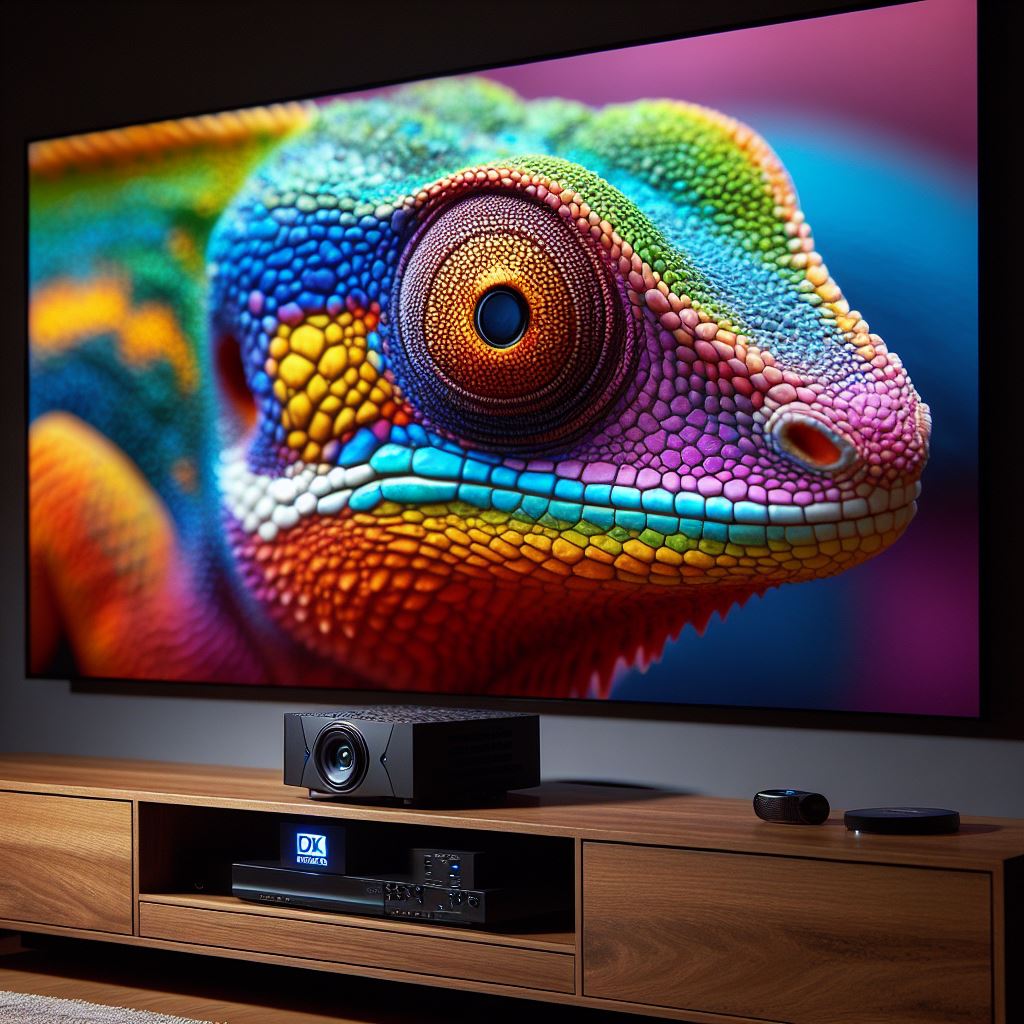The current projector market is rife with misleading claims and outright scams. In this article, we’ll delve into the common pitfalls and deceptions you need to watch out for when shopping for a 4K projector.
The Fine Print: 1080p and 720p Projectors Masquerading as 4K
A prevalent trick in the projector market is labeling products as “4K projectors” when they are, in fact, only capable of 1080p or even 720p resolution. These projectors justify their misleading labels by stating, often in fine print, that they can receive a 4K input signal. This means that while the projector can accept a 4K signal from your Blu-ray player or streaming device, it doesn’t actually output that signal in 4K resolution. Instead, it downscales the image to match its lower native resolution, resulting in a significant drop in picture quality.

If you search “4K projector” in Amazon, the vast majority of results will be projectors that include 4K in the title, but do not have 4K resolution.
Built-in Android TV Systems: The Hidden 1080p Culprit
Even for projectors that genuinely support 4K resolution, there’s another caveat to be aware of: the built-in Android TV system. Many modern projectors come equipped with these systems, but they often run at 1080p. This means that unless you’re using an external 4K-compatible media source, you’re not actually utilizing the projector’s full 4K capabilities. It’s a frustrating oversight that can leave buyers feeling shortchanged, despite their investment in a supposedly superior product.
How to check if your Android/Google TV smart projector is displaying a 4K resolution:
1. Use the Play store to download the app AIDA64
2. Launch the app and navigate to the Display tab
3. Check the Screen Resolution at the top of the page


The Truth About Native 4K and Pixel-Shift Technology
When it comes to true 4K resolution, the landscape narrows considerably. Very few projectors on the market today offer native 4K resolution. Instead, most use a technology called pixel-shifting. This technique rapidly shifts the image slightly to create the illusion of higher resolution, resulting in a picture that closely approximates native 4K. While it’s not quite the same, the results are often impressive enough that many users won’t notice the difference. Don’t let the use of pixel-shifting deter you; it’s a viable and effective way to achieve excellent image quality.

The Sub-$100 Trap: Outright Lies and Exaggerations
The most blatant scams come from the low-end of the market. Projectors priced under $100, often sold by dubious sellers on platforms like Temu, boldly advertise themselves as 4K or even 8K capable. These claims are almost always outright lies. These projectors typically have abysmal resolutions, poor brightness, and inferior build quality. Falling for these too-good-to-be-true deals will leave you with a subpar viewing experience and a lighter wallet

This projector listed on Amazon advertises 8K support, 4K native resolution, and a staggering 20,000 lumens. This product is listed for $360, but would realistically cost upwards of $10,000 if these specs were genuine. This is one of hundreds of outright scams that you will find with projectors on different websites.
Conclusion
Navigating the projector market requires a discerning eye and a healthy dose of skepticism. While the promise of 4K resolution is enticing, it’s essential to look beyond the marketing hype and fine print. Be wary of projectors that downscale 4K input to lower resolutions, and understand the limitations of built-in Android TV systems. Recognize that pixel-shift technology, while not native 4K, can still deliver excellent results. Most importantly, avoid the temptation of cheap, too-good-to-be-true deals that promise high-end performance for a fraction of the cost. By staying informed and cautious, you can find a projector that truly enhances your home theater experience.


Leave a comment